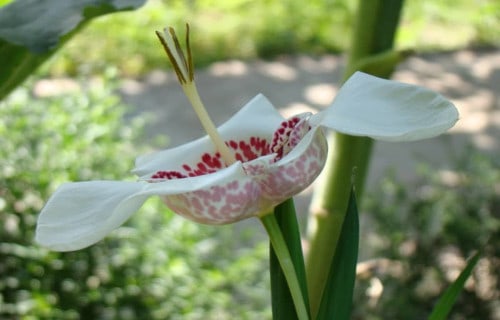
CCL: https://bit.ly/1p2b8Ke
We truly hope that you enjoy this article on 7 Fabulous South American Plants. To be certain, wonderful plants appear in virtually every part of the globe. But, this region just seems to have more than its fair share. The climate and conditions just appear to lend themselves to producing the most incredible, and impressive, array of flora. So, sit back and enjoy reading our selections for this list.
Cattleya Orchid
Cattleya Orchid Facts
- Leading off our list of 7 Fabulous South American Plants is the Stunning Cattleya Orchid. In fact, it is the first of two orchids included herein.
- Firstly, this term names a genus containing 113 gorgeous species of orchids. While this sounds like quite a lot, comparatively, it isn’t. That’s because ore than 26,000 species of orchids exist around the world.
- But, the first discovery of this group by non-native individuals occurred in 1817, in Brazil. Consequently, researchers later took samples to Glasgow for identification and further study.
- Additionally, the Cattleya Orchid actually bears the name of William Cattleya, a British horticulturist of the time. He was the first to successfully grow it outside of its native habitat.
- Finally, following this single shipment for research, outsiders did not see it again for another 70 years. This occurred due to erroneous information pertaining to the location of its discovery.
Cattleya Orchid Physical Description
Most notably, the Cattleya Orchid remains best known for having large, brilliantly colored blooms. The size of the blooms also varies greatly by species. However, these typically range from 2-6 in (5-15 cm) across.
The colors of the various individual species also include almost every color. But, that excludes black and a few shades of blue. Furthermore, the majority of breeds produce flowers with three narrow sepals.
In addition, it also typically produces three broad petals. One of these usually forms the conspicuous lip the plants remain known for. Finally, a single plant sometimes displays anywhere from 1-10 flowers.
- Kingdom: Plantae
- Phylum: Angiosperms
- Class: Monocots
- Order: Asparagales
- Family: Orchidaceae
- Genus: Cattleya
Cattleya Orchid Distribution, Habitat, and Ecology
The Cattleya Orchid remains a purely tropical group of species. It generally occurs in a range extending from Argentina to Costa Rica, in South America. The various types most commonly grow in areas of bright sunlight, with partial shading.
The color of the leaves also easily varies according to the amount of sunlight they receive. Under optimum conditions of lighting, however, the leaves develop an apple green color.
Finally, this orchid does not bloom without ample sunlight. It prefers soil with a rather high moisture content, but with ample drainage. The plant also reproduces through the production of pseudobulbs. Some species even bloom twice per year.
Hookers Lips
Hookers Lips Facts
- Placing second among our 7 Fabulous South American Plants is the unforgettably distinctive species known as Hooker’s Lips.
- Most notably, this marvel of Nature only maintains this unique shape for a brief time. However, believe it or not, the highly distinctive shape actually does serve an important purpose.
- In addition to being a conversation starter, the species plays its own vital role in its environment. That holds true because it remains one of the few acceptable host plants for the rare golden silk moth.
- The inhabitants of its endemic range have also discovered multiple uses for the species. Given its rather unique form, it makes a popular gift Valentine’s Day. Various parts of the tree have also been discovered to have medicinal properties.
- Sadly, It has become highly endangered. It was moderately rare, to begin with. Now, its numbers and range have both been severely diminished by climate change and habitat loss.
Hooker’s Lips Physical Description
Firstly, though the Hooker’s Lips plant technically must be called a tree, it forms a rather diminutive one. This holds true due to the fact that this most unusual species rarely exceeds 10 ft (3 m) in height.
Further, the trunk grows comparatively thin. As a result, it often becomes bent slightly from the weight of the foliage. Likewise, the leaves of the species also grow comparatively long and thick in design.
The most noteworthy feature of the tree consists, obviously, of the bright red lip-like structure. These actually consist of bracts that form temporarily, prior to the appearance of the flowers.
Additionally, the unique shape favors the hummingbirds that serves as its primary pollinator. While the bracts present as red, the flowers show a bright white in color. This further adds to the attraction for pollination.
Due to the range in which it developed, the trees bloom from December to March. The flowers also become quite aromatic in nature. The berries that appear after the flowers stay small and dark blue or black.
- Kingdom: Plantae
- Class: Angiosperm
- Order: Gentianales
- Family: Rubiaceae
- Genus: Psychotria
- Species: Psychotria elata
Hooker’s Lips Distribution, Habitat, and Ecology
The astounding Hooker’s Lips evolved endemically to a specific portion of both South and Central America. This range principally includes the countries of Costa Rica, Ecuador, Panama, and Colombia.
First of all, the deep portions of the rainforest comprise the native environment of the unusual plant. But, while the tree evolved as a tropical species, it has proven adaptable to temperate climates.
In addition to its visual appeal, the plant has provided several medicinal uses. Local inhabitants have learned to make use of both the bark and leaves. These can be used to treat coughs, earaches, and skin rashes.
Also, the indigenous Kuna Indians have traditionally used the plant for treating dyspnea.
Unfortunately, the species’ numbers appear to be decreasing quickly. This seems to be occurring due to the ongoing rainforest deforestation. As a result of this, its available habitat has greatly diminished.
Tiger Flower

CCL: https://bit.ly/1p2b8Ke
Tiger Flower Facts
- Next in this compendium of 7 Fabulous South American Plants is the magnificent Tiger Flower. Such a wonderful sight to behold.
- Firstly, the term serves as one of the common names for the rather stunning Tigridia pavonia. In addition to this, the plant also goes by the names Mexcian Shell Flower and Jockey’s Cap.
- Further, this gorgeous flower represents only one of roughly twelve species classified in its genus. Quite amazingly, all of the known flowers in this group rank as equally beautiful to behold.
- Very sadly, however, the beauty remains rather short-lived. While each plant produces multiple stems, individual blooms open for only a single day. While not unknown, this remains an uncommon trait.
- Due to its brilliant and varied colors, this marvel of Nature has become quite popular. Gardeners and homeowners alike often use it as an ornamental plant in many parts of the world.
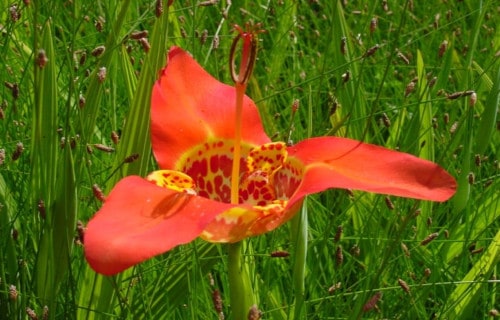
CCL: https://bit.ly/24dGLTK
Tiger Flower Physical Description
First of all, the gorgeous Tiger Flower remains a true pleasure to look upon. That’s because its brilliant blooms develop as two-tone. Therefore, it’s always presenting the world a combination of two lovely colors.
But, even more fascinating remains another fact. Each individual bloom on the same plant often displays different color combinations. Most notably, these incorporate pink, white, red, orchid orange, and yellow.
Further, when open, the large blossoms, consisting of three single-color petals, grow quite large. In fact, these may reach 6 in (15 cm) across. These also flank three smaller petals spotted with a second color.
Additionally, each stem develops quite slender and long. Therefore, a stem often attains a length of as much as 24 in (60 cm). Finally, the foliage consists of upright, bladed leaves, colored a light green.
- Kingdom: Plantae
- Phylum: Angiosperms
- Class: Monocots
- Order: Asparagales
- Family: Iridaceae
- Genus: Tigridia
- Species: T. pavonia
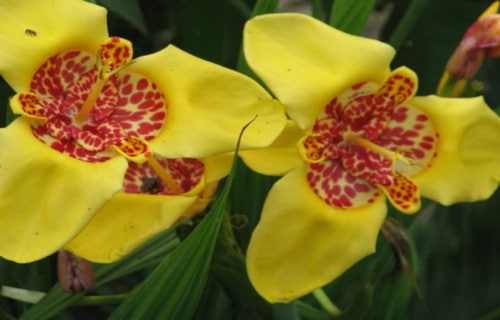
CCL: https://bit.ly/1jxQJMa
Tiger Flower Distribution, Habitat, and Ecology
The truly remarkable Tiger Flower evolved as endemic to a particular portion of South America and Central America. This range includes the countries of Mexico, Guatemala, El Salvador, and Honduras.
But, through the actions of humans, the gorgeous flower spread extensively. This happened both accidentally and intentionally. As a result, it has now also become naturalized in the countries of Peru and Equador.
In its natural habitat, this incredible species most typically appears in a specific habitat. This consists of forests, usually with a high ratio of either oak or pine. But, it also appears along roadsides and other semi-wild habitats.
Its gorgeous, two-toned blossoms open early in the morning, and close in the early afternoon. Yet sadly, it lasts only a single day. However, each day a different bloom will open. Thus each plant blooms for an extended period.
In addition, this amazing flower grows from either small seeds or slightly larger bulbs. It also manages to reproduce in rather prodigious numbers. Furthermore, the bulbs themselves actually remain edible.
In fact, in the past, the various Indigenous Peoples within its habitat range often consumed them. Many of them considered the roasted bulbs a delicacy, possessing a chestnut-like flavor.
Blue Chilean Crocus
Blue Chilean Crocus Facts
- The fourth entry in this compendium of 7 Fabulous South American Plants is the breathtaking Blue Chilean Crocus.
- Interestingly, despite the name, the quite beautiful Blue Chilean Crocus isn’t actually a crocus at all. Botanists actually classify this remarkable species as a member of a rather different family of flowering plants.
- Yet none can deny the delicate beauty of its blooms, regardless of its classification. Sadly, however, this same beauty consequently contributed to its near extinction in the wild, due to extensive over collecting.
- Partially due to this over collecting, the plant was believed extinct in the wild, until its rediscovery in 2001. Overgrazing and general habitat loss also played a role in its near demise in the wild. Yet, only a few apparently remain in the wild.
- While naturally occurring individuals near extinction, the species abounds in cultivation around the world. That’s because this beautiful plant has become very popular in numerous countries for landscaping and greenhouses.
Blue Chilean Crocus Physical Description
While not actually a crocus, the stunning Blue Chilean Crocus remains classified as a flowering perennial.
In addition, this small plant produces stems that average 4 in (10 cm) in height. Each of these develops 1-3 leaves that grow relatively long and elongated. These average 4 in (10 cm) in length, and 0.4 in (1 cm) in width, and display a bright green color.
Yet the flowers themselves rank as the most noteworthy feature of the species. These grow in a trumpet shape and may be either pale blue, deep blue, or even purple.
In the meantime, the fruit appears as a tiny, rounded capsule, and contains only a few, very small seeds. In addition, these often fall on rock and never germinate.
- Kingdom: Plantae
- Phylum: Angiosperms
- Class: Monocots
- Order: Asparagales
- Family: Tecophilaeaceae
- Genus: Tecophileae
- Species: T. cyanocrocus
Blue Chilean Crocus Distribution, Habitat, and Ecology
Firstly, the marvelous Blue Chilean Crocus only grows only in the country of Chile, in South America. And even there, this stunningly beautiful flower currently now exists only in a few scattered locations.
This rare species only endemically inhabits a range restricted to altitudes ranging between 6,600 and 9,800 ft ( 2,000-3,000 m). Consequently, this range comprises extremely stony slopes in the Andes Mountains.
In its native habitat range, it blooms between October and November. However, natural propagation remains sparse, due to the nature of the environment and the tiny seed count per plant.
Yet, in cultivation, horticulturists accomplish this rather easily via the corms the plant produces. In its native range, its primary threats include habitat loss and climate change.
In conclusion, blooming typically requires about 5 years of growth.
Indian Pipes
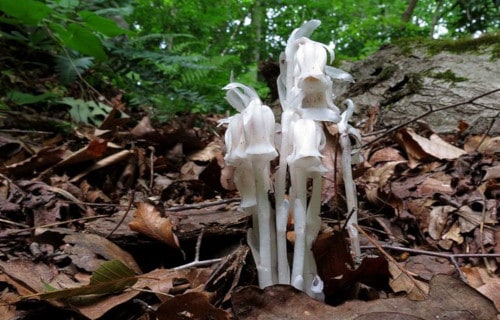
CCL: https://bit.ly/1ryPA8o
Indian Pipes Facts
- Perhaps the most thoroughly unusual of these 7 Fabulous South American Plants is the amazing Indian Pipes.
- Firstly, the term serves as the common name for an extremely unusual species of plant. This rather remarkable herbaceous species also evolved to fill a very specific ecological niche.
- While the perennial plant qualifies as herbaceous, it contains absolutely no chlorophyll. This further makes the amazing species one of the few true plants known to man that does not utilize chlorophyll.
- It also represents a remarkable plant that evolved as truly parasitic in nature. But, this only occurs within certain very specific conditions. This, therefore, severely limits its potential habitats.
- It also grows only in conjunction with certain fungi which already parasitize trees, usually beech trees. Finally, since it appears rather abundant in its native range, the IUCN currently has no listing for it.
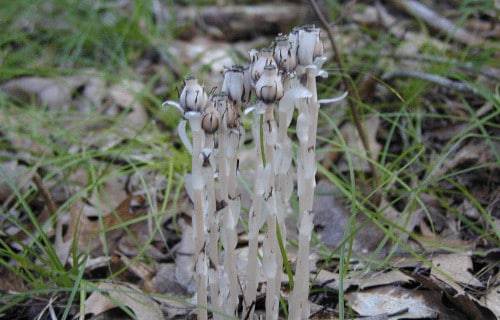
CCL: https://bit.ly/1E6HPMf
Indian Pipes Physical Description
Most notably, the astonishing Indian Pipes remains predominantly pure white in color. This, understandably, occurs due to its lack of chlorophyll. However, it will occasionally display light pink shades with small black spots.
Most specimens of the amazing species also tends to attain a maximum height of roughly 12 in (30 cm). Further, its leaves generally develop quite few in number, and rarely exceed 0.4 in (10 mm) in length.
Finally, this rather astonishing plant only produces a single downward pointed flower per stem. Meanwhile, the fruit consists of a small capsule.
- Kingdom: Plantae
- Phylum: Angiosperms
- Class: Eudicots
- Order: Ericales
- Family: Ericaceae
- Genus: Montropa
- Species: M. uniflora
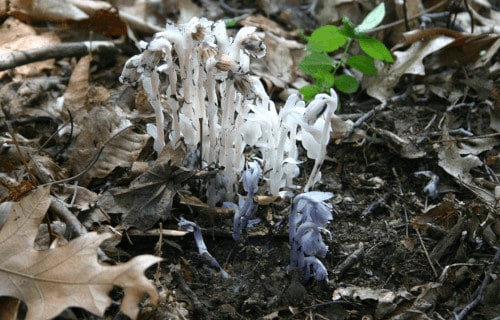
CCL: https://bit.ly/1E6HPMf
Indian Pipes Distribution, Habitat, and Ecology
First of all, Indian Pipes appears to only occur in temperate portions of North America, South America, and Asia. But, even within these regions, the species usually occurs only in rather widely scattered, small concentrations.
Since it does not require sunlight for photosynthesis, the Indian Pipes typically grows in dark environments. But, these will obviously vary from location to location. Typically, though, it includes such places as extremely dense forests.
In fact, this amazing plant also remains one of the few known flowers to grow in this manner. Further, the environmental requirements of the species are highly complex.
Finally, as a result of this fact, propagation only occurs with great difficulty. Therefore, the species occurs sparsely and in small numbers. This holds true despite having a wide range of distribution.
Amazon Lily
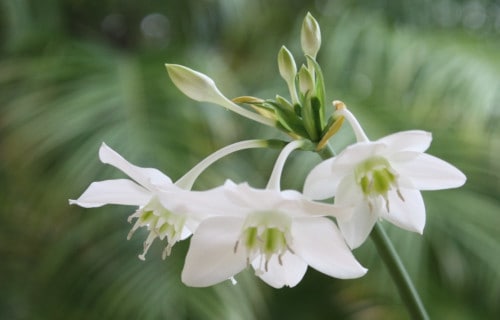
CCL: https://bit.ly/1ryPA8o
Amazon Lily Facts
- The sixth entry out of these 7 Fabulous South American Plants is the extraordinarily lovely Amazon Lily.
- Firstly, its name serves as the term collectively applied to a genus of beautiful Neotropical flowering plants. Further, roughly 20 species constitute this group. But, all of them hold a close relationship with the Amaryllis family.
- Due to its beauty, many hold a great love for all varieties of these flowers. This has also led to the development of numerous hybrids. But the term Amazon Lily most commonly applies to 2 specific types.
- Understandably, these particular species have been extensively cultivated. Many of types the stunning flower have now become naturalized in regions outside of its endemic range.
- However, all this natural beauty hides a truly dark secret. All parts of this little beauty contain extremely powerful toxins. As a result, ingestion of even a small quantity of the plant can prove fatal.
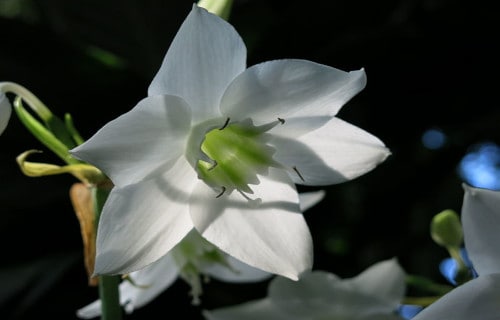
CCL: https://bit.ly/1xMszCg
Amazon Lily Physical Description
Most notably, the beautiful Amazon Lily forms a perennial plant in nature. Therefore, the species grows from a small bulb. Varieties can vary slightly, however, most types average a height of 31 in (80 cm).
Further, leaves of the various types range in length from 8-22 in (20-55 cm) in length. The delicate flowers also average 2 in (5 cm) in diameter. These typically develop star-shaped, and commonly a bright white in color.
In addition, the flowers remain known for possessing a strong, pleasant scent. These generally appear in small groupings that number 3-10 blooms. Especially relevant is the color of the interior central structure, which often has a remarkable light green tint.
- Kingdom: Plantae
- Phylum: Angiosperms
- Class: Monocots
- Order: Asparagales
- Family: Amaryllidaceae
- Genus: Eucharis
- Species: E. amazonica
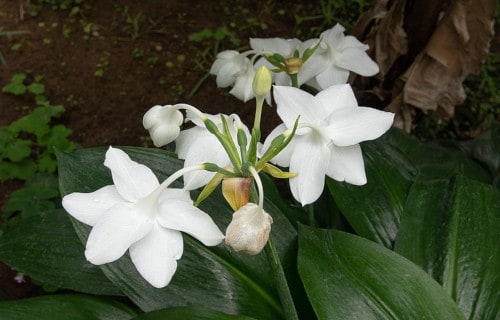
CCL: https://bit.ly/1GZ2EOO
Amazon Lily Distribution, Habitat, and Ecology
The endemic range of the known types of Amazon Lily serves as perhaps its most noteworthy feature. This perennial plant only appears in the Amazon regions of either South America or Central America. This area extends from Guatemala to Bolivia.
Interestingly, a few of them have become naturalized in other regions. These include Mexico, the West Indies, and even a few tropical island. It has adapted to high heat and humidity, as a result of this. Despite this, it generally occurs naturally in shaded areas.
Also, the various plants grow best in certain specific soils, consisting of a combination of loam and sand. These typically bloom in the spring, yet some species will also bloom multiple times throughout the year, under the right conditions.
Lycaste Orchid
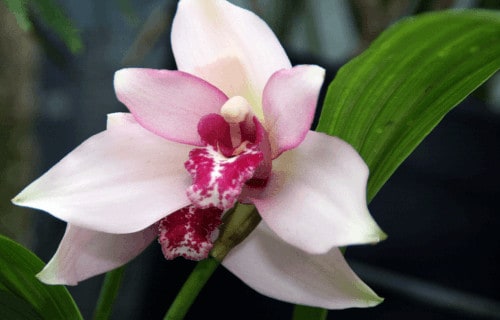
CCL: https://bit.ly/1xMszCg
Lycaste Orchid Facts
- The final of our 7 Fabulous South American Plants is also the second of the two orchids on the list, the Lycaste Orchid.
- Firstly, this represents the common name of an entire group of flowers. Further, this small but impressive genus of truly breathtaking orchids contains roughly 30 species of plants.
- Many experts also consider this to be the most beautiful of all known varieties of orchid. In addition, its extreme popularity with gardeners around the world would seem to support this opinion.
- Along with its great beauty, the flower also remains renowned for its distinctive aroma. This scent has, in fact, often been compared to a unique combination of cloves and cinnamon.
- Finally, due to its great popularity, numerous hybrids and cultivars exist. As a result, various forms of the Lycaste Orchid have become among the most common of all types of orchids.
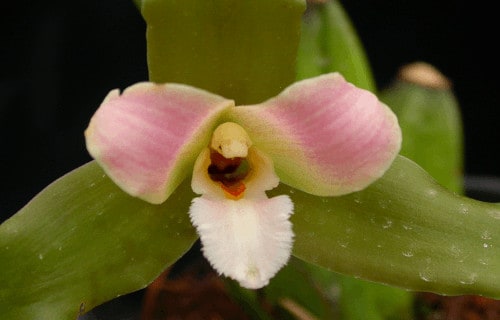
CCL: https://bit.ly/1p2b8Ke
Lycaste Orchid Physical Description
First of all, all known varieties of the gorgeous Lycaste Orchid have quite similar characteristics. Therefore, most possess the thin, pleated leaves, and egg-shaped pseudobulbs for which the genus has become famous.
Further, as with all orchids, the flowers in this magnificent genus possess three sepals and three petals. In addition to this trait, all of the various forms also commonly present several color varieties.
The sepals may be either orange, green, reddish brown, or yellow while the petals are most commonly white, orange, or yellow.
Additionally, the flowers of most Lycaste Orchid varieties typically grow to a length of about 4 in (10 cm) in diameter. But, a few varieties, however, sometimes reach a length of as much as 7.1 in (18 cm).
- Kingdom: Plantae
- Phylum: Angiosperms
- Class: Monocots
- Order: Asparagales
- Family: Orchidaceae
- Genus: Lycaste
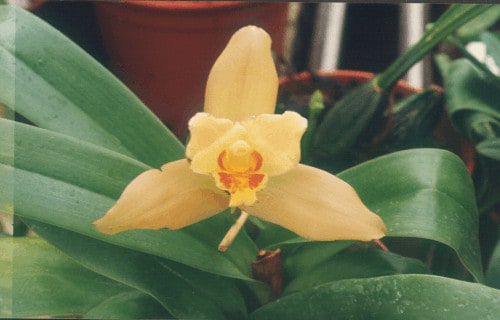
CCL: https://bit.ly/2LTO13N
Lycaste Orchid Distribution, Habitat, and Ecology
Most notably, all known natural varieties of the rather stunning Lycaste Orchid evolved as endemic to the same part of the world. As a result, all remain native to the forest regions of Central America and South America.
In fact, the various varieties grow in the wild through an extensive territorial range. Moat notably, this extends from Brazil all the way to Mexico. But, it occurs most commonly in warm, moist, tropical climates.
Within the genus, the Lycaste Orchid also splits into two main groups. However, this trait remains rather common among plants. These particular groups consist of the Deciduosae and Macrophyllae.
On one hand, the Deciduosae group grows within a temperature range approximating 90 F (32.2 C).Meanwhile, the Macrophyllaes prefer a temperature range of 60-80 F (15.6-26.7 C). The relative humidity in both endemic regions is also between 50-70%.
We sincerely hope that you have enjoyed reading this article about 7 Fabulous South American Plants as much as we enjoyed creating it. The astounding beauty of this region of the world never ceases to amaze us all. But, unfortunately, much of it now finds itself threatened, in a variety of ways. It remains up to all of us to do all that we can to protect and preserve these species, and myriad others, for our posterity.
Check out our other articles on 4 Genuinely Gorgeous Grasshoppers, Oilbird, Piton de la Fournaise, Brazilian Wandering Spider, Lower Keys Marsh Rabbit, Psychedelic Frogfish
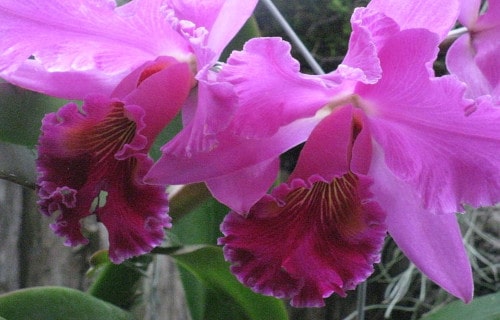
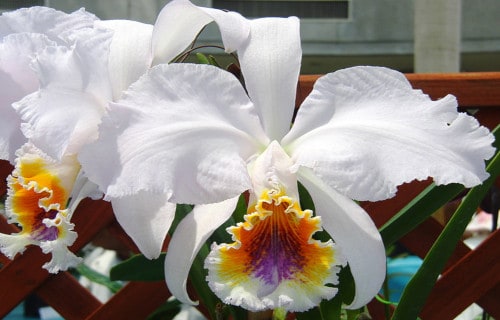
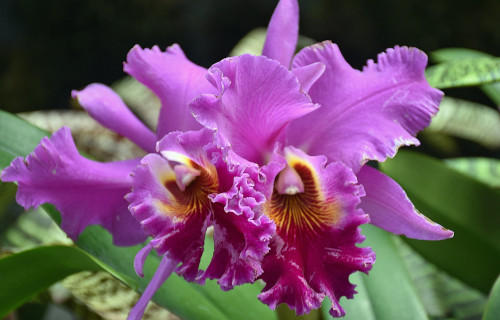
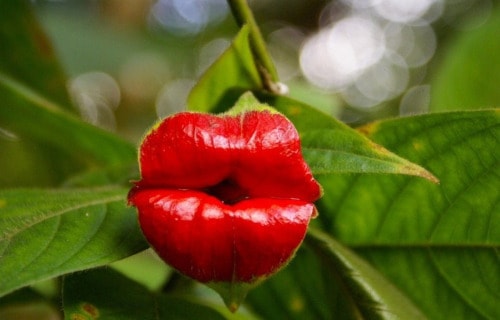

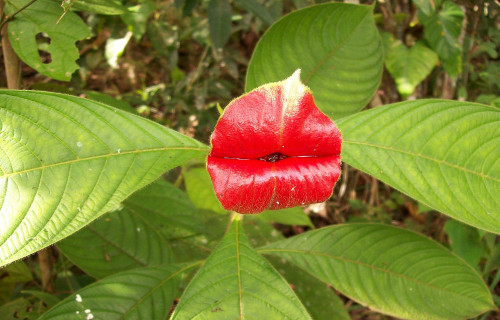
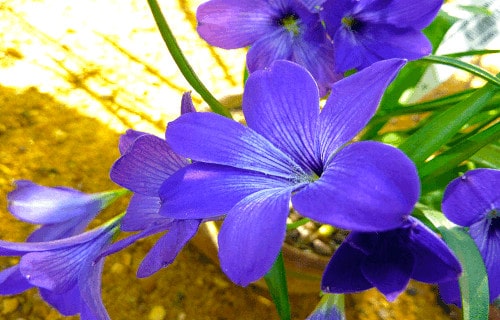
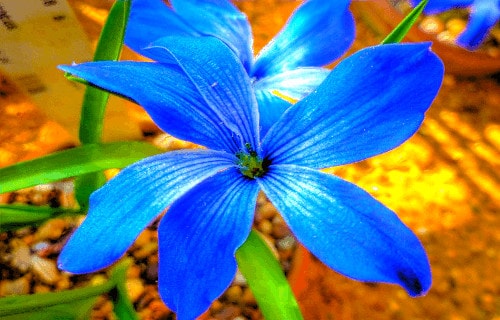









Leave a Reply